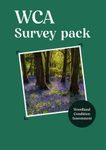![The Subtropical Vegetation of Southwestern China The Subtropical Vegetation of Southwestern China]()
Click to have a closer look
About this book
Contents
Customer reviews
Related titles
About this book
The first presentation of the special character, uniqueness, and value of the subtropical vegetation of southwestern China, seen also as a result of geological events and evolution, and in terms of correspondence with ecological factors and in response to human activities. Included are comparisons and links with similar systems around the world. A clear, concise account of the patterns and processes of the subtropical vegetation of a huge area of SW China is presented in The Subtropical Vegetation of Southwestern China. The frequent use of line illustrations and color maps and photos leads the reader into an exhaustive analysis of this sometimes complex topic. Of particular importance are several Tertiary relict forests that only recently have been identified and studied.
For the first time an important subtropical vegetation in China is synthesized and presented in an up-to-date fashion. By documenting the present state of the subtropical vegetation, one of China's ecological treasures, The Subtropical Vegetation of Southwestern China will serve as a point of departure for future researchers as they trace and interpret the evolution of the natural environment.
Contents
Chapter 1 Introduction
Abstract
1.1 Environmental setting
1.1.1 Physiography
1.1.2 Climate
1.1.3 Geology
1.2.4 Soils
1.2 Vegetation changes over geological time
1.2.1 Vegetation in the Early Tertiary
1.2.2 Vegetation in the Late Tertiary
1.2.3 Vegetation in the Quaternary
1.3 Floristics and vegetation
1.4 Human influences
Chapter 2 Evergreen broad-leaved forests
Abstract
2.1 Forest types
2.2 Species diversity
2.3 Leaf size patterns of evergreen broad-leaved species along the altitudinal gradient
2.3.1 Floristic changes in evergreen broad-leaved trees by altitudes
2.3.2 Leaf size changes along the altitudinal gradient
2.3.3 Leaf traits in the differentiation of forest types
2.4 Structure and dynamics of primary forests
2.5 Secondary succession
2.5.1 Successional trends
2.5.2 Species diversity along the succession gradient
2.5.3 Soil seed banks
2.6 Threats of habitat fragmentation and degradation
Chapter 3 Evergreen sclerophyllous Quercus forests
Abstract
3.1 Distribution and community types
3.2 Species diversity and dynamics
Chapter 4 Warm temperate coniferous forests
Abstract
4.1 Distribution and forest types
4.2 Dynamics of Pinus yunnanensis forests after a major fire
4.2.1 Community structure and regeneration
4.2.2 Succession
4.2.3 A model on successional pathway
Chapter 5 Man-made forests
Abstract
5.1 Controversial opinions
5.2 Plant diversity and regeneration
5.3 Hydrological characteristics and nutrient loss
5.4 Nutrient cycling
5.4.1 Litter production and nutrient inputs
5.4.2 Soil chemical properties
5.5 Ecosystem processes
Chapter 6 Semi-savannas in hot-dry valleys
Abstract
6.1 Characteristics of hot-dry valleys
6.2 Semi-savannas
6.2.1 Sparse woody grassland
6.2.2 Thorny succulent shrubland
Chapter 7 Endemism and Tertiary relict forests
Abstract
7.1 Endemism
7.2 Tertiary relict forests
7.2.1 The Ginkgo biloba forest
7.2.1.1 Ginkgo biloba
7.2.1.2 Forest community structure and floristic composition
7.2.1.3 Population structure and ecological characteristics
7.2.2 The Metasequoia glyptostroboides forest
7.2.2.1 Metasequoia glyptostroboides
7.2.2.2 Distribution and habitats
7.2.2.3 Forest community structure
7.2.2.4 Population structure
7.2.2.5 Regeneration
7.2.3 The Thuja sutchuenensis forest
7.2.3.1 Thuja sutchuenensis
7.2.3.2 Forest community structure
7.2.3.3 Regeneration dynamics
7.2.3.4 Population age structure and regeneration modes
7.2.3.5 Persistence
7.2.3.6 Thuja sutchuenensis as compared to the other Thuja species
7.2.4 The Davidia involucrata forest
7.2.4.1 Davidia involucrata
7.2.4.2 Age structure and regeneration modes
7.2.4.3 Tree dispersion patterns
7.2.4.4 Ecological performance
7.2.5 The Tetracentron sinense forest
7.2.5.1 Tetracentron sinense
7.2.5.2 Forest community structure
7.2.5.3 Size and age structure
7.2.5.4 Regeneration modes
7.2.5.5 Natural disturbance and persistence
7.2.6 The Liriodendron chinense forest with special reference to village fengshui forest
7.2.6.1 Liriodendron chinense
7.2.6.2 Habitats and forest community structure
7.2.6.3 Population structure
7.2.6.4 Regeneration patterns and processes
7.2.6.5 Associated fengshui forest
7.2.7 Tertiary relict trees and their habitats
Chapter 8 Relations to relevant regions
Abstract
8.1 Phytogeographic considerations
8.2 Subtropical evergreen broad-leaved forests of SW China as compared to those in other regions
8.2.1 As compared with other Chinese regions
8.2.1.1 Forest communities, species distribution and composition
8.2.1.2 Effects of environmental factors on species diversity
8.2.2 As compared with Japan
8.2.2.1 Forest communities and species diversity
8.2.2.2 Forest structure and dynamics
8.2.2.3 Forest succession
8.2.3 As compared with SE Asia
8.2.3.1 Characteristics of flora
8.2.3.2 Altitudinal vegetation zones
8.2.4 As compared with the eastern Himalayas
8.2.4.1 Characteristics of vegetation
References
Index
Customer Reviews














































